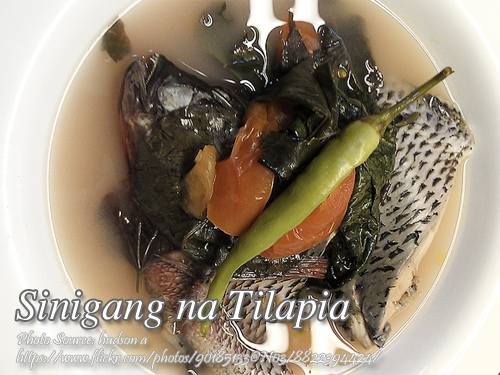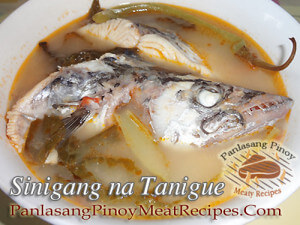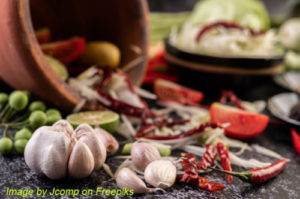This is a simple fish sinigang recipe called sinigang na tilapia made with tilapia fish and the souring agent used is tamarind. The cooking procedure is as simple as the other fish sinigang you can find. Unlike other meat based sinigang (e.g. sinigang na baboy), the cooking time is very short and only requires 2 to 3 minutes specially if it is only fish fillet. I think this is the cheapest fish sinigang you can make since tilapia, compared to other fishes, is abundant and you can see it almost everyday in the wet market.
There are different breeds of tilapia if you are not aware of and my suggestion is choose the ones that does not taste muddy or too fishy. Since this dish is a soup, it will be very unpleasant if you get the kind of tilapia that taste muddy. And for you to make the rice wash, it is just simply getting the water from the raw rice while washing it. But first discard the first washing. The second and third will be used.
Sinigang na Tilapia: A Comforting Taste of Home
Whenever I make sinigang na tilapia, I’m transported back to those rainy afternoons in Laguna, where my Tita Linda’s kitchen filled with the tangy, aromatic scent of tamarind simmering in a pot. This humble dish, a simple yet flavorful sour soup, has a way of wrapping you in a warm, comforting embrace. It’s no wonder sinigang has been a cornerstone of Filipino households for generations, and making it with tilapia brings a unique, budget-friendly twist to the classic.
Tilapia, often called the “poor man’s fish,” is a staple in many wet markets across the Philippines. It’s accessible, versatile, and perfect for sinigang because of how its mild flavor soaks up the sour broth. But not all tilapia are created equal—my cousin Edsel always warns me to avoid the ones that taste too “muddy.” Choosing fresh, clean-tasting fish makes all the difference, especially in a dish as straightforward as this.
Why Sinigang na Tilapia is Perfect for Beginners
Unlike its meat-based counterparts, sinigang made with fish is incredibly quick to prepare. You don’t have to tenderize tough cuts of pork or beef for hours. With tilapia, the cooking process takes just a few minutes—especially if you use fillets. That makes this dish an excellent choice for busy weekdays or for anyone just starting their culinary journey.
The sourness of sinigang comes from tamarind, or sampalok, which gives it that signature lip-puckering tang. My brother Nestor once told me that the sourness in sinigang mirrors the Filipino spirit—resilient and vibrant even when life throws a curveball. Whether you’re battling homesickness or just craving something comforting, this dish has a way of making things better.
Secrets to a Flavorful Sinigang na Tilapia Broth
The heart of sinigang na tilapia lies in its broth. A trick I learned from my Lola Melinda is to use hugas bigas (rice wash) as the soup base. This simple addition, often overlooked, gives the soup a subtle creaminess and depth. The second or third washing is ideal; discard the first as it can be too starchy.
Start by boiling the rice wash with onions, tomatoes, and ginger. These aromatics lay the foundation of the broth, infusing it with a gentle sweetness and a touch of spice. Ginger, in particular, helps neutralize any fishy taste in the tilapia, leaving you with a clean, well-rounded flavor.
Next comes the tamarind. You’ll want to boil the fresh fruit until it softens, then mash it to extract the juice. Straining the pulp into the pot ensures that every drop of its tangy essence blends seamlessly into the soup. My Uncle Noli, who swears by homemade tamarind extract, says this step is what elevates the dish. “Don’t skimp on the tamarind,” he always says, “or it’s not real sinigang.”
The Final Touches
Once the broth is ready, it’s time to add the tilapia. My mom always insisted on keeping the fish whole, but I’ve found that fillets are more beginner-friendly. They cook evenly and are easier to handle, especially if you’re serving this dish to kids.
Slice some labanos (radish) and toss it in with the fish. Its crisp texture provides a nice contrast to the soft, flaky tilapia. Let everything simmer just until the fish is cooked through—overcooking will make the tilapia fall apart.
As the soup bubbles, add the finishing touches: siling haba for a mild heat, talbos ng kamote for a hint of bitterness, and a splash of patis for that umami punch. Each ingredient plays a crucial role in sinigang na tilapia, balancing the flavors and creating a harmonious bowl of sinigang.
A Dish with a Rich History
Did you know that sinigang has been around since pre-colonial times? Its origins are deeply rooted in Filipino culture, where souring agents like tamarind, calamansi, or even green mangoes were used to flavor dishes. The use of tilapia in sinigang is a relatively modern twist, reflecting the resourcefulness of Filipino cooks.
Tilapia itself has an interesting history. Originally from Africa, it was introduced to the Philippines in the 1950s as a sustainable food source. Over the years, it became a beloved staple, appearing in everything from fried dishes to soups like sinigang.
Food for the Soul
There’s something about a steaming bowl of sinigang na tilapia that feels like a warm hug from home. Maybe it’s the way the sour broth dances on your tongue or how the tender fish melts in your mouth. Or perhaps it’s the memories tied to each bowl—the laughter of family gatherings, the sound of rain against the windows, and the comforting routine of sharing a meal.
For beginners, this dish is more than just an easy recipe. It’s an invitation to connect with Filipino culture and tradition. So the next time you’re looking for a simple, hearty meal, try making sinigang na tilapia. Who knows? It might just become a favorite in your kitchen, too.
How to Cook Sinigang na Tilapia
Ingredients
- 1 kilo tilapia cleaned, scales and innards removed and cut into 2 pcs each
- 3 pcs tomatoes quartered
- 1 pc onion quartered
- 2 pcs green chilies or siling haba
- 1 pc thumb sized ginger sliced
- 150 grams sampalok tamarind fruit
- 3/4 cup talbos ng kamote sweet potato leaves
- 3 Tbsp. patis or fish sauce
- 1 pcs small radish slice diagonally
- 6 cups rice wash or rice water
- pepper to taste
Instructions
How to cook Sinigang na Tilapia:
- In a pot, bring the rice wash to a boil. Then put the onions, tomatoes and ginger. Boil for another 2 minutes and cover.
- Then add the tamarind fruit and boil again for another 2 minutes or until the tamarind is soft. Remove from the pot and put in a small bowl. Press the tamarind using a spoon to crush the fruit.
- Get some soup from the pot and pour on the tamarind. Extract the juice from the tamarind while pressing the fruit in the strainer directly above the pot. Discard the seeds and peel. Then add the tilapia and radish in the pot and bring to a boil.
- While the soup is boiling add in the siling haba, kamote tops, patis and pepper. Cover and boil for another 3 minutes or until done. Serve hot.
Notes
Cooking Tips:
Use Fresh Tilapia for the Best Flavor
Fresh tilapia ensures your tilapia has a clean and mild taste without the muddy or overly fishy flavor that can overpower the dish. Check for clear, shiny eyes and firm flesh when selecting whole fish at the market. If fresh isn’t available, frozen fillets work too, but be sure to thaw them properly to maintain their texture.Don’t Skip the Tamarind Extraction
The tangy kick of sinigang comes from properly extracting the juice from fresh tamarind fruit. Boil the tamarind until soft, then mash and strain it into the broth to avoid seeds and tough fibers. This step might take a little extra time, but it’s what gives the soup its authentic sour depth.Add Vegetables at the Right Time
Vegetables like radish and talbos ng kamote bring texture and balance to the dish, but timing is crucial to keep them from overcooking. Add firmer vegetables like radish early on and delicate greens toward the end to preserve their freshness. This way, you’ll enjoy a vibrant, flavorful soup with perfectly cooked ingredients.





